Talk with our local travel specialist who can help organize your trip.
7 Best treks in Bhutan
Trekking in Bhutan is set in the silent mountain paths, rural villages set back in time. An escapade in the Land of Thunder Dragon is a culmination of culture, traditions and religion interwoven to offer a once in a lifetime opportunity. Bhutan is one of the best destinations for trekking due to its location in the eastern Himalayas with sparsely populated small villages scattered around the rolling hills. The land is blessed with a subtropical climate in the central areas. While the higher mountains witness snowfalls in the cold winters, the hills observer cool winds, making it an idyllic landscape.
Bhutan’s government, to protect Bhutan's pristine land and culture, has initiated a high value and low impact tourism, which results in a comparably expensive fee. However, the price to travel to a country less traveled by, with the full support of your guide and all necessary facilities, is abundant. Read more: Top 10 Reasons To Visit Bhutan
Table of Content
1. Druk Path Trek - 8 Days (Difficulty Level: Easy)
2. Jumolhari Trek - 11 Days (Difficulty Level: Moderate
3. Merak Sakteng Trek And Tour In Bhutan - 16 Days (Difficulty Level: Moderate
4. Laya Gasa Trek - 17 Days (Difficulty Level: Moderate To Challenging)
5. Dagala Thousand Lakes Trek - 8 Days (Difficulty Level: Moderate
6. Soi Yaksa Trek - 12 Days (Difficulty Level: Moderate)
7. Snowman Trek - 30 Days (Difficulty Level: Challenging
Accommodation And Food In Bhutan Tours And Treks
Best Time For Trekking In Bhutan
Bhutan is a different and special trekking destination for amateur to professional trekkers due to the variety in the landscape. Bhutan Trekking packages range from the most challenging treks to the easier ones. One needs to acquire a good physique for the challenging treks that can take up to a month in the Himalayas of Bhutan.
Here are 7 best treks in Bhutan.
1. Druk Path Trek - 8 Days (Difficulty Level: Easy)
Druk Path Trek in Bhutan is a one-of-a-kind trek in Bhutan that takes you on an adventure through the alpine pastures, pine and rhododendron forests and introduced you to the pristine high-altitude lakes of Jimilangtsho, Janetsho and Simkotra.
Druk Path Trek difficulty is rated easy as the altitude increases at a slower pace day by day. The highest point of the trek is Simkotra Tsho at the elevation of 4110m/13484ft, which offers views of Mount Gangkar Puensum (7,570m/24,836ft), the highest unclimbed mountain in the world and the highest in Bhutan. Along with the natural beauty, you will also get to witness the grazing activities and the olden huts of Yak herders in remote pastures.
Brief Itinerary
|
Day 1 |
Arrival in Paro and sightseeing tour (2,280m/7,480ft) |
|
Day 2 |
Acclimatization hike to Tiger’s Nest Monastery (3,180m/10,433ft) and sightseeing – 5 km, 4-5 hours |
|
Day 3 |
Short drive to Ta Dzong (2,487m/8,159ft) then trek to Jele Dzong (3400m)- 10 km, 4-5 ours |
|
Day 4 |
Trek from Jele Dzong (3,400m/11,154ft) to Jangchulakha (3,650m/11,975ft) – 10 km, 3 to 4 hours |
|
Day 5 |
Trek from Jangchulakha to Jimilangtsho (3,870m/12,696ft) – 11 km, 4 hours |
|
Day 6 |
Trek from Jimilangtsho to Simkotra Tsho (4110m/13,484ft) – 11 km, 4 hours |
|
Day 7 |
Trek from Simkotra Tsho to Thimphu via Phajodhing – 14 km, 5 hours |
|
Day 8 |
Drive from Thimphu to Paro then Final Departure |
2. Jomolhari Trek - 11 Days (Difficulty Level: Moderate
Jomolhari Trek Bhutan package is distinct for the views of Jumolhari mountain while taking a loop from and to Paro while camping at remote sites along the way. Jumolhari trek is one of the most popular treks in Bhutan as the trail offers a chance to view the second-highest unclimbed peak in the world, Mt. Jumolhari (7,326m/24035ft) while camping at the highest settlement of Lingshi at an altitude of 4100m/13,451ft.
Along with the views of Mt. Jumolhari, the hills are decorated with monasteries of cultural significance. The trek itinerary mostly revolves around getting one with nature. Waking through blue pine, rhododendron, conifer lush forests beside the Wang Chhu river through the villages of Sio, Takethang and Dangochang are just some of the highlights of the trek. Bhutan's traditional economy can be seen in the farmlands with locals engaged in food and cash crop production.
Brief Itinerary
|
Day 1 |
Arrival in Paro (2,280m/7,480ft) and sightseeing |
|
Day 2 |
Acclimatization Hike to Tiger’s Nest Monastery (3,180m/10,433ft) – 5 km, 4-5 hours |
|
Day 3 |
Trek from Drukgyal Dzong in Paro to Shana (2,850m/9,350ft) – 17 km- 5 to 6 hours |
|
Day 4 |
Trek from Shana to Sio Thangthangkha (3,750m/12,303ft) 21 Km- 7 to 8 hours |
|
Day 5 |
Trek from Sio Thangthangkha to Jangothang (4,050m/13,287ft) – 19 km- 5 to 6 hours |
|
Day 6 |
Acclimatization in Jangothang |
|
Day 7 |
Trek from Jangothang to Lingshi (4,100m/13,451ft) – 19 km, 6-7 hours |
|
Day 8 |
Long trek from Lingshi to Shodu (4,100m/13,451ft) – 22 km, 8-9 hours |
|
Day 9 |
Trek from Shodu to Barshong then Domshisa, (3400m/11,155ft) – 23 Km, 7-8 Hours |
|
Day 10 |
Trek from Domshisa to Dodena, then drive to Thimphu, 17 Km, 4-5 Hours |
|
Day 11 |
Drive from Thimphu to Paro for Final Departure |
3. Merak Sakteng Trek And Tour In Bhutan - 16 Days (Difficulty Level: Moderate
Merak Sakteng Trek and Tour package is mostly about people and culture in the semi-nomadic villages of Merak and Sakteng. It traverses on foot and at times takes a drive to the most wonderful natural settings. Also, it is the best trek for travelers who want to get an insight into the locals' livelihood and traditions in the remote areas of Bhutan.
Camping in the Merak Village by conquering the Nakcungla pass (4153m/13,625ft) will bring you to the Sakteng village which is the prime of your tour. The protected area of Sakteng wildlife sanctuary offers a chance to view some of the rare species of animals including Himalayan Red Fox and Red Panda. Interacting with the villagers, eating the local produce and praying in their Buddhist temples is the highlight of this tour making it distinct from any other trek in Bhutan.
Brief Itinerary
|
Day 1 |
Arrival in Paro (2,280m/7,480ft) and sightseeing tour |
|
Day 2 |
Sightseeing hike to Paro Taktsang/Tiger’s Nest Monastery then drive to Thimphu |
|
Day 3 |
Thimphu sightseeing tour |
|
Day 4 |
Drive from Thimphu to Punakha - 76 Km, 2-3 Hours |
|
Day 5 |
Short Drive from Punakha to Phobjikha Valley - 85 Km, 3 Hours |
|
Day 6 |
Drive from Gangtey/Phobjikha valley to Bumthang - 152 Km, 5 Hours |
|
Day 7 |
Bumthang exploration tour |
|
Day 8 |
Drive from Bumthang to Mongar, 198 Km, 6 Hours |
|
Day 9 |
Drive from Mongar to Trashigang, 91 Km, 3-4 Hours |
|
Day 10 |
Drive from Trashigang to Merak, 67 Km, 4 hours |
|
Day 11 |
Trek from Merak to Miksateng (3079m/10,101ft) – 14km, 6 hours |
|
Day 12 |
Trek from Miksateng to Sakteng (2,950m/9,678ft) – 14km, 5 hours |
|
Day 13 |
Sakteng sightseeing tour |
|
Day 14 |
Trek from Sakteng to Joenkhar Teng (1733m/5,685ft)- 17 km, 7 hours then short drive to Trashigang |
|
Day 15 |
Drive from Trashigang to Samdrup Jongkhar, 167 km, 5-6 hours |
|
Day 16 |
Drive from Samdrup Jongkhar to Guwahati, India for final departure, 104 km, 2-3 hours |
Where to travel next?
Get help from our travel specialists for holiday ideas that matches your interests.
4. Laya Gasa Trek - 17 Days (Difficulty Level: Moderate To Challenging)
Laya Gasa Trek is one of Bhutan's best trekking destinations for adventurists who want to trek in the remote unspoiled area and get one with nature. Through daily treks, Laya Gasa trek traverses over some of the highest passes and into lush forests that open up to wide pasture camps with vivid vistas of snow-capped mountains.
Bhutan Laya Gasa Trek itinerary takes you to the second-highest settlement in Bhutan, the Laya village (3,830m/12,631ft) inhabited by Bhutanese ethnic tribes and navigates into the healing hot springs of Gasa Tshachu. Distinct to any other moderate to challenging trek, Laya Gasa settlements offer views to an array of the Himalayas like Gangchhenta, Masagang, Tshendagang, Teri Gang, Gangla Karchung and Jelekangphu Gang.
Brief Itinerary
|
Day 1 |
Arrival in Paro (2,280m/7,480ft) and excursion |
|
Day 2 |
Acclimatization and excursion hike to Tiger's Nest Monastery |
|
Day 3 |
Trek from Drukgyal Dzong to Shana (2,850m/9,350ft) – 17 km- 5 to 6 hours |
|
Day 4 |
Trek from Shana to Sio Thangthangkha (3,750m/12,303ft)- 6 to 7 hours |
|
Day 5 |
Sio Thangthangkha to Jangothang (4,050m/13,287ft) – 19 km- 4 to 5 hours |
|
Day 6 |
Acclimatize and excursion at Jangothang |
|
Day 7 |
Long Trek from Jangothang to Lingshi (4,100m/13,451ft) – 19 km, 6-7 hours |
|
Day 8 |
Trek from Lingshi to Chebisa (3850m/12,631ft) – 12 km, 5 to 6 hours |
|
Day 9 |
Trek from Chebisa to Shomuthang (4130m/13,549ft) – 17 km, 6 to 7 hours |
|
Day 10 |
Trek from Shomuthang to Robluthang (4160m/13,648ft) – 15 km, 5 to 6 hours |
|
Day 11 |
Trek from Robluthang to Lingmithang (4140m/13,582ft) – 19 km, 7 to 8 hours |
|
Day 12 |
Trek from Lingmithang to Laya (3850m/12,631ft) – 10 km, 3-4 hours |
|
Day 13 |
Trek from Laya to Koena (3800m/12,467ft) - 19Km, 6 to 7 hours |
|
Day 14 |
Trek from Koena to Gasa (2900m/9,514ft) – 19 km, 6 to 7 hours |
|
Day 15 |
Drive from Gasa to Punakha and sightseeing, 75 Km, 3 Hours |
|
Day 16 |
Drive from Punakha to Thimphu and sightseeing tour 76 Km, 2-3 Hours |
|
Day 17 |
Drive from Thimphu to Paro and Departure flight |
5. Dagala Thousand Lakes Trek - 8 Days (Difficulty Level: Moderate
Dagala Thousand Lakes Trek crosses through the tranquil natural landscapes with the sight of many lakes in the mountains, making it one of the most desired treks in Bhutan. The ‘thousand lakes’ is an allegory for the many lakes that are situated in Labatama. Perhaps the trek's main highlight is camping beside the turquoise Utsho Tsho Lake and strolling towards the Relitsho, Setsho, Hentsho and Jagetsho Lakes.
Apart from the views of the lakes, the Dagala Thousand Lakes trek itinerary traverses through the rich biodiversity of Bhutan in the green Juniper, Birch, Himalayan Blue Poppy and rhododendron forests to the views of Mt. Kanchenjunga, Mt. Everest, Mt. Jumolhari, Mt. Tsende Gang, Mt. Gangche Ta Mt. Jichu Drake and Mt. Masang Gang. In essence, the Dagala Thousand Lakes trek is all about nature.
Brief Itinerary
|
Day 1 |
Arrival at Paro |
|
Day 2 |
Sightseeing tour to Tiger’s Nest Monastery then drive to Thimphu – 5 km, 4 to 5 hours |
|
Day 3 |
Trek from Genekha to Gur (3290m/10,793ft) – 7 km, 5 hours |
|
Day 4 |
Long Trek from Gur to Labatama (4,300m/14,107ft) – 12 km, 6 hours |
|
Day 5 |
Sightseeing and Acclimatization at Labatama |
|
Day 6 |
Long Trek from Labatama to Panka (4,000m/13,123ft) – 8km, 5 to 6 hours |
|
Day 7 |
Trek from Panka to Chamgang and Transfer to Thimphu – 14km, 8 hours |
|
Day 8 |
Drive from Thimphu to Paro for Departure |
6. Soi Yaksa Trek - 12 Days (Difficulty Level: Moderate)
Soi Yaksa Trek takes you to the lap of Mt. Jumolhari into the most popular campsite of Jangothang at an elevation of 4,050m. Due to the high elevation and sudden change in altitude, the trek is regarded to be neither easy nor challenging.
The major highlight of the Soi Yaksa Trek is Mt. Jumolahri and Mt. Jichu Drake's views. You will cross some of the highest passes like Chele La (3,575m/11729ft), Bontela (4890m), Takhungla (4520m/14,829ft) and Thombula (4380m/14,370ft) throughout the trek. Camping at Soi Yaksa valley at the highest point of the trek at an elevation of 4890m turns out an adrenaline-pumping adventure. If you are someone who is seeking solitude in nature, then this trek is for you.
Brief Itinerary
|
Day 1 |
Arrival in Paro (2,280m/7,480ft) and sightseeing tour |
|
Day 2 |
Drive from Paro to Haa Valley crossing Chele La Pass (3,575m/11729ft) |
|
Day 3 |
Hike to Tiger’s Nest Monastery for Excursion and Acclimatization (3,180m/10,433ft) – 5 km, 4-5 hours |
|
Day 4 |
Trek from Drukgyal Dzong (Paro) to Shana (2,850m/9,350ft) – 17 km- 5 to 6 hours |
|
Day 5 |
Trek from Shana to Sio Thangthangkha (3,750m/12,303ft) 21 Km- 7 to 8 hours |
|
Day 6 |
Long Trek from Thangthagka to Jangothang (4,050m/13,271ft), 19 km- 5 to 6 hours |
|
Day 7 |
Acclimatize and excursion at Jangothang (4010m/13,156ft) |
|
Day 8 |
Trek from Jangothang to Soi Yaksa (4890m/16043 ft), 16 Km, 6-7 Hours |
|
Day 9 |
Trek from Soi Yaksa to Thombu Shong (4180m/13,714ft), 11 Km, 4-5 Hours |
|
Day 10 |
Trek from Thombu Shong to Gunitsawa and drive to Thimphu (4380m/14,370ft), 13 Km, 4-5 Hours |
|
Day 11 |
Excursion at Thimphu |
|
Day 12 |
Drive from Thimphu to Paro for departure |
7. Snowman Trek - 30 Days (Difficulty Level: Challenging
Snowman Trek Bhutan has amassed the reputation of being ‘the hardest trek in the world’ because it is the longest hiking trail in Bhutan spanning up to 30 days. Not just the distance, but the Snowman trek route navigates through some of the highest passes in Bhutan. To top it off, Snowman Trek's difficulty is also largely dependent upon the changeable weather so it is wise to go on the trek only in the best season.
The first half of the trek is similar to the combination of the Jumolhari Trek and the Laya Gasa Trek. The second half on the other hand is distinct and stimulating. Crossing the Keche La pass (4650m/15,255ft), Jazela pass at 5200m/17,060ft, Loju La pass 5170m/16,961ft and the maximum elevation of 5350m/17,552ft at Rinchen Zoe pass through raging storms and dizzying altitudes feels like a conquest at times but the close-up views of Mt. Gangkar Puensum (7520m/24,671ft), the highest mountain in Bhutan, is all worth it.
Snowman trek cost largely hinges on the variation of the trip, but in general, it is comparatively higher than other treks. However pricey the package might be, if you are a professional trekking enthusiast then this is the most acclaimed trek in Bhutan and perhaps the world.
Brief Itinerary
|
Day 1 |
Arrival in Paro |
|
Day 2 |
Paro Sightseeing |
|
Day 3 |
Hike to Tiger's Nest ( 9km, 5-6 hours) |
|
Day 4 |
Trek from Drugyal Dzong to Shana (Trek starts) (17km, 5-6 hours) |
|
Day 5 |
Trek from Sharna Zampa to Thangthangkha(3610m) 22km, 7-8 hours |
|
Day 6 |
Trek from Thangthangkha to Jangothang(4080m) 19Km, 5-6 hours |
|
Day 7 |
Rest Day in Jangothang (4080m) |
|
Day 8 |
Trek from Jangothang to Lingshi (4010m) 18Km, 6-7 hours |
|
Day 9 |
Trek from Lingshi to Chebisa (3880m) 12km, 5-6 hours |
|
Day 10 |
10 Trek from Chebisa to Shomuthang(4220m) 17km, 6-7 hours |
|
Day 11 |
Trek from Shomuthang to Robluthang(4160m) 18km, 6-7hours |
|
Day 12 |
Trek from Robluthang to Limithang (4140m) 19km, 6-7 hours |
|
Day 13 |
Trek from Limithang to Laya (3850m) 10km, 4-5 hours |
|
Day 14 |
Rest Day in Laya (3850m) |
|
Day 15 |
Trek from Laya to Rhoduphu (4160m) 19 km 7-8 hours |
|
Day 16 |
Trek from Rhoduphu to Narethang(4900m) 17km, 5-6 hours |
|
Day 17 |
Trek from Narethang to Tarina (4350m) 18km, 6-7 hours |
|
Day 18 |
Trek from Tarina to Woche(4350m) 17km, 6-7 hours |
|
Day 19 |
Trek from Woche to Lhedi(4200m) 17km, 6-7 hours |
|
Day 20 |
Trek from Lhedi to Thanza(4150m) 17km, 7-8 hours |
|
Day 21 |
Rest Day in Thanza(4150m) |
|
Day 22 |
Trek from Thanza to Tshochena (5000m) 18km, 7-8 hours |
|
Day 23 |
Trek from Tshochena to Jichu Dramo (5050m) 14km, 4-5 hours |
|
Day 24 |
Trek from Jichu Dramo to Chukarpo (4600m) 16km 5-6 hours |
|
Day 25 |
Trek from Chukarpo to Thampe Tsho (4300m) 18km 6-7 hours |
|
Day 26 |
Trek from Thampe Tsho to Maurothang (3610m) 16km, 5-6 hours |
|
Day 27 |
Trek from Maurothang to Sephu (2650m) |
|
Day 28 |
Fly from Bumthang to Paro (1 hour) |
|
Day 29 |
Rest Day in Paro |
|
Day 30 |
Depart from Paro |
Where to travel next?
Get help from our travel specialists for holiday ideas that matches your interests.
Accommodation And Food In Bhutan Tours And Treks
The government of Bhutan’s tourism initiative to have a registered tour operator arrange tours for foreign travelers in Bhutan has made it easier to find accommodation. You will not have to worry about finding accommodation because the tariff paying tourists whose tours are arranged by tour operators get to stay in 3 star rated hotels and guest houses.
Most of these hotels have twin sharing beds. In major cities and towns of Bhutan, like Paro, Thimpu, Punakha, Bumthang and Wangduephodrang, you may find luxury hotels where you can upgrade the room by paying an extra cost. There is also an option for homestays in local villagers to gain a true experience of their lifestyle. Homestays offer a homely warm feeling and they are clean and comfortable. On the trek, you will stay in tented accommodation. You can find state-of-the-art requirements in camps set up with the help of your trekking crew.
Although Bhutan's food is decent, one should be aware that trekking foods will not bring you any closer to world-class culinary. Bhutan places to visit like Thimphu, Punakha and Paro have restaurants with continental dishes from India and Tibet. However, in village homestays, you will only find local food made with farm-grown products. On camping trips, you will get delicious foods freshly prepared by the guide with fresh produce. Hygiene and freshness are important factors for Bhutanese locals.
Predominantly, you can find Ema Datshi which is a mixture of chill called ‘ema’ and Cheese called ‘Datshi’ in almost all parts of Bhutan. They even consider it their native dish. Apart from that, visitors must try local dumplings-Mo: Mo, locally brewed maize, millet wine Ara and butter tea Suja, on their visit to Bhutan.
Best Time For Trekking In Bhutan
It is very important to prep for any tour in Bhutan. Apt information about the best time to visit Bhutan may help you avoid harsh weather conditions. The best time for trekking in Bhutan is considered to be during autumn from late September to November. During this time the weather is clear with unobstructed views of the high peaks. There is generally less chance of a rain shower.
Spring season from March to May is also considered to be equally good for trekking and tours. Rhododendrons, wildflowers give a vibrant appeal to the landscapes. However, you may experience a slight rainfall at times.
The winter season from December to February is cold and harsh in the higher elevation. You can go on cultural tours in villages and flat southern areas, which has a subtropical climate, during the winter. You do not have to face snow blizzards, usually found in trails above 4,000m/13,123ft elevation.
Monsoon season running from June to mid-September typically sees rainfall. The downpours make the trails muddy and slippery, thus less favorable to travel. However, the mid of September observes lesser rainfall than the onset of June, so it can also be favorable for tours.
Nights are generally chilly in all these seasons in elevations above 3,000m/9,842ft. All these seasons have their distinct characteristics making it good for trekking in Bhutan. That being said, you need to have an apt discussion with your tour guide for setting the date as per the Bhutan trekking package you will take. In challenging treks like the Snowman trek, where you will have to cross 5000m/16,404ft of altitude it is safe to travel in the prescribed season like autumn when the mountain wind is calmer. For short treks and treks that don’t take you beyond 4,000m/13,123ft altitude, you can visit at any time of the year.
Apart from the seasons and the weather, you can also ask your tour operator to time your trip during major festivals in Bhutan. Visits during the Punakha Festival, Royal Highlander Festival, Haa Summer Festival and Black Crane Festival mark the best time to get to known the Bhutanese culture and religion.
Recommended Read: Best Time To Visit Bhutan
What To Pack For Trekking In Bhutan?
Certain essentials are included as part of your Bhutan trekking package, like items for sleeping, cooking, eating, toiletries, inflatable mats, duffle bags, sleeping bag liners and more. Contact your tour operator to confirm these items. Apart from these, there are certain must-carry essentials mentioned below:
- Fleece jackets and windcheater
- Scarf and winter hat
- Raincoat
- Warm gloves
- Trekking shirt and pants
- Trekking socks
- Sun hats and sunglasses (protect from wind and snow blindness)
- Flip Flop, Trekking Boots, Lightweight shoes
- Toiletries
- Prescribed medication
- Medical kit (Diamox tablets, bandages, aspirin, burn cream, etc.)
- Lipbalm, sunscreen, insect repellant, water purification tablets
- Dry fruits and snacks
Some trekking equipment that you need to bring:
- Headlamp and torch
- Trekking poles
- Water bottle and thermos
- Towels
- Waterproof duffle bag
- Camera and related accessories
- Power bank
There are other optional packing essentials that you can add to this list as per your requirement.
Tips For Trekking In Bhutan
Trekking in Bhutan can get challenging if you do not plan well. Hence it is wise to do some research to fully prepare for the adventure of your lifetime. Following are some of the tips you might consider during your trek to Bhutan:
- Visit a travel doctor in your home country to get health advice and obtain your necessary medication and insurance before your trip to Bhutan, particularly for challenging treks.
- Don’t rush to your destination when you are at an elevation above 3,000m/9,842ft. Rather, take slower steps to avoid altitude sickness.
- Since Bhutan trekking takes you to the Himalayas in a rugged landscape, it is best if you do some regular exercise, swimming, running activities, a month before your trek. You might have to walk 7-9 hours per day for the physically challenging treks per day with lots of ascends and descends, so prepare accordingly.
- Carry ample batteries and power bank as you will not find electricity in the campsites and rural villages
- Be decently and properly dressed while visiting a place of religious significance- Dzong, temples You can wear long-sleeved shirts, long pants and closed shoes.
- Since many of the religious landmarks do not allow photography of the interiors, be sure to read the signs nearby. Also, take permission before taking photography/videography or consult your guide.
- Tipping your travel crew is a personal choice but would be appreciated by them.
- Refrain from any immoral activity or even smoking in the religious and spiritual landmarks of Bhutan. Ask your guide for any social etiquettes if you have a doubt.
- Carry a bag no more than 15kg which is a limit for one trekker as the horse/yak carry two trekkers baggage weighing 30kg collectively.
- As far as possible, consider homestays because it is a great way to interact with the local people and get engaged in their chores and activates.
Conclusion
A trip to any of the above mentioned treks, whether challenging or undemanding, gives you an appropriate insight into why Bhutan is regarded as the happiest country. Bhutanese locals are hardworking but have a contented way of life that is mostly encircled around meditation, spirituality and religion, promoted by Buddhism. These tours offer you views of the high standing mountains, religious landmarks and lush forests.
Trekking and tours in Bhutan can be exciting and pleasant if you take proper precautions and make proper planning with your travel operator's help.
If you are unsure about which trekking and tour package in Bhutan would best suit you, then you can contact us for further details. Remember us for the best trekking and tour service and guidance in the Land of Druk, Bhutan.
- Written by: Naba Raj Amgai
Updated: Feb, 2, 2021

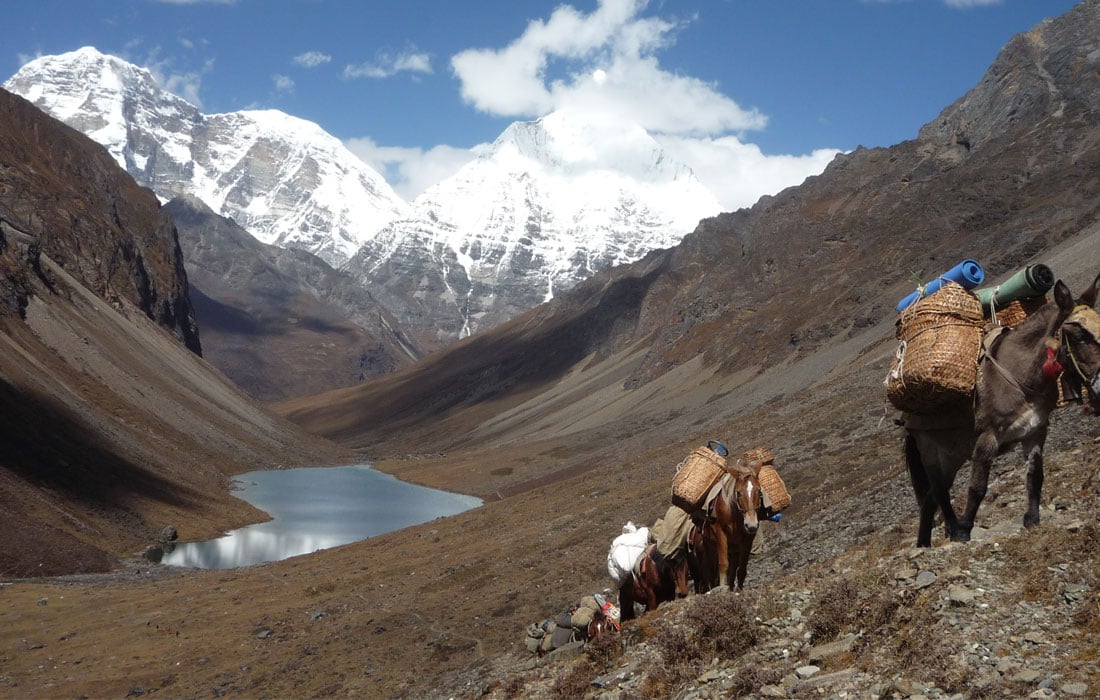








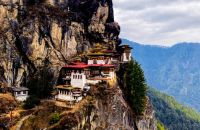
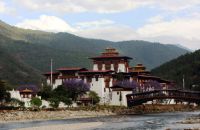
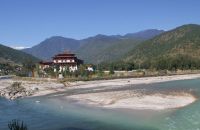

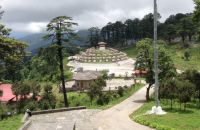
















Recent Comments